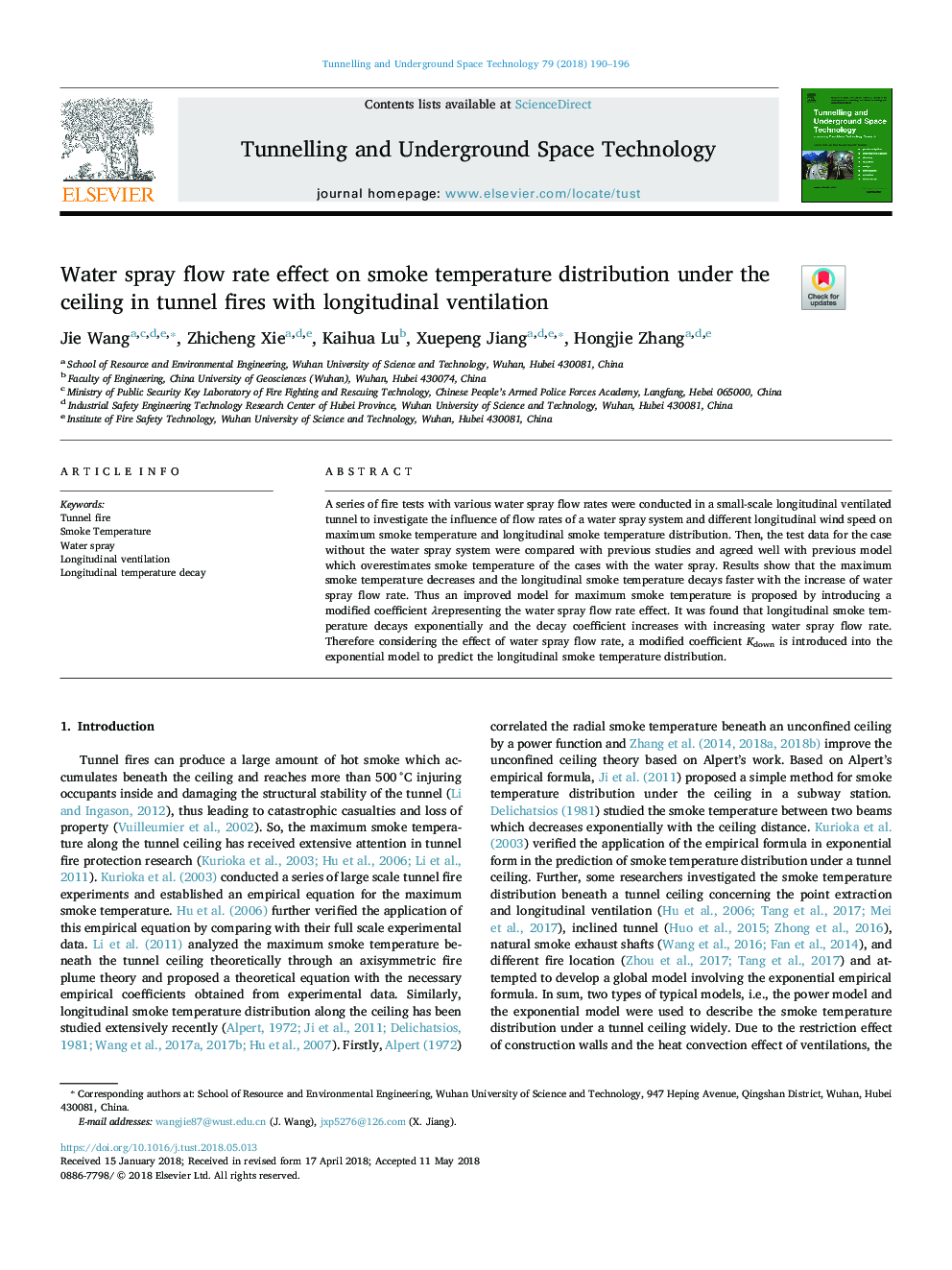| Article ID | Journal | Published Year | Pages | File Type |
|---|---|---|---|---|
| 6782299 | Tunnelling and Underground Space Technology | 2018 | 7 Pages |
Abstract
A series of fire tests with various water spray flow rates were conducted in a small-scale longitudinal ventilated tunnel to investigate the influence of flow rates of a water spray system and different longitudinal wind speed on maximum smoke temperature and longitudinal smoke temperature distribution. Then, the test data for the case without the water spray system were compared with previous studies and agreed well with previous model which overestimates smoke temperature of the cases with the water spray. Results show that the maximum smoke temperature decreases and the longitudinal smoke temperature decays faster with the increase of water spray flow rate. Thus an improved model for maximum smoke temperature is proposed by introducing a modified coefficient λrepresenting the water spray flow rate effect. It was found that longitudinal smoke temperature decays exponentially and the decay coefficient increases with increasing water spray flow rate. Therefore considering the effect of water spray flow rate, a modified coefficient Kdown is introduced into the exponential model to predict the longitudinal smoke temperature distribution.
Related Topics
Physical Sciences and Engineering
Earth and Planetary Sciences
Geotechnical Engineering and Engineering Geology
Authors
Jie Wang, Zhicheng Xie, Kaihua Lu, Xuepeng Jiang, Hongjie Zhang,
